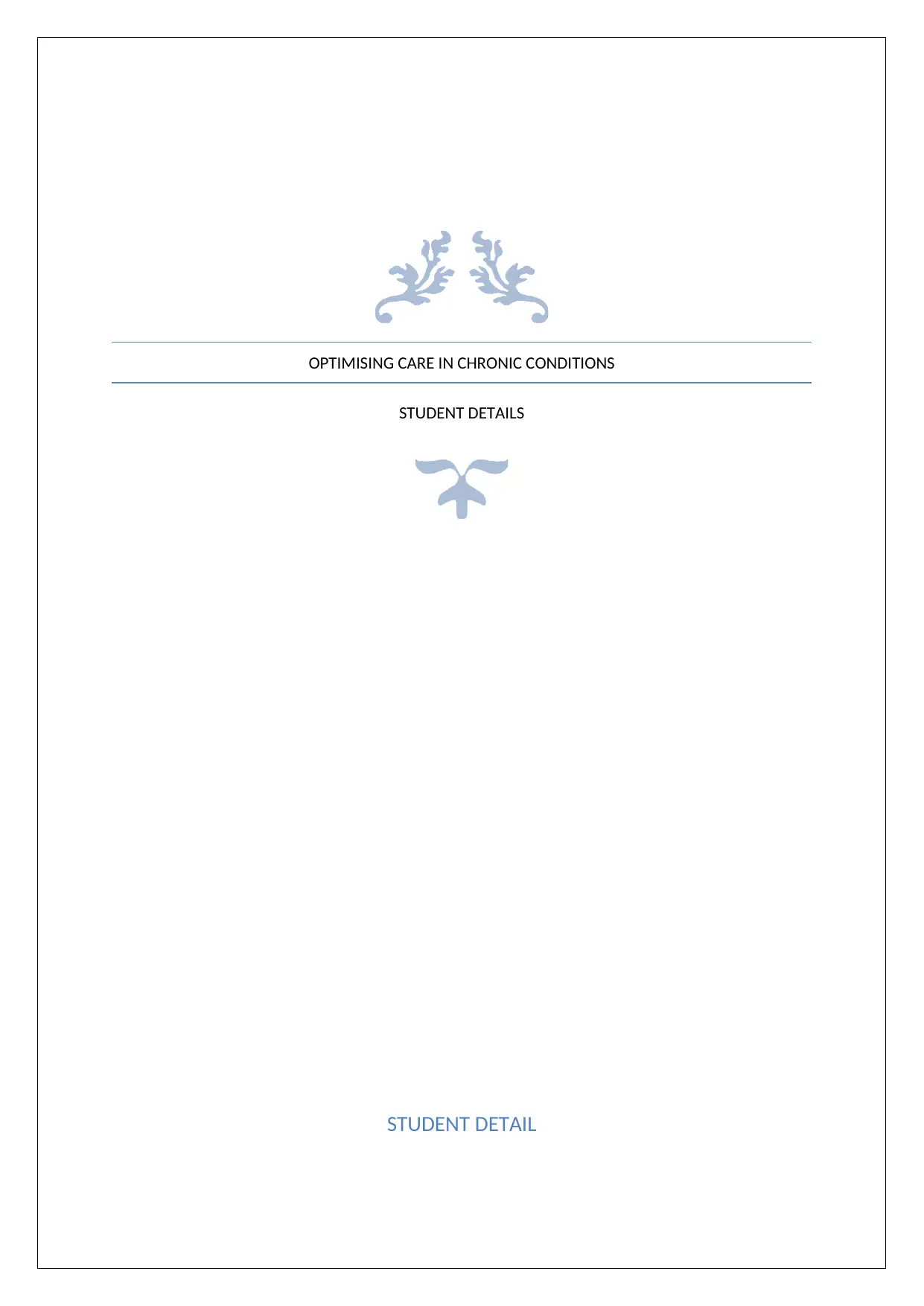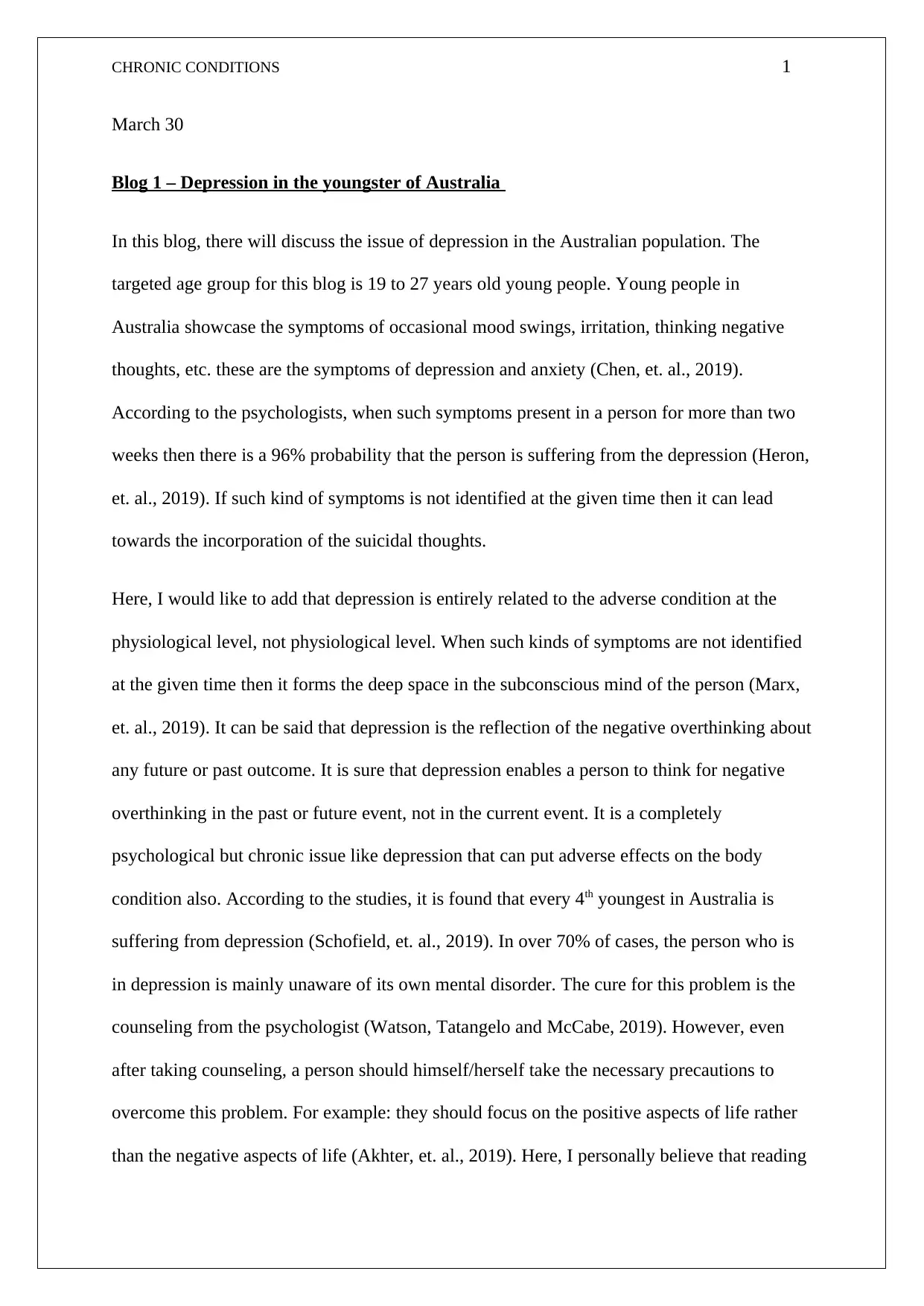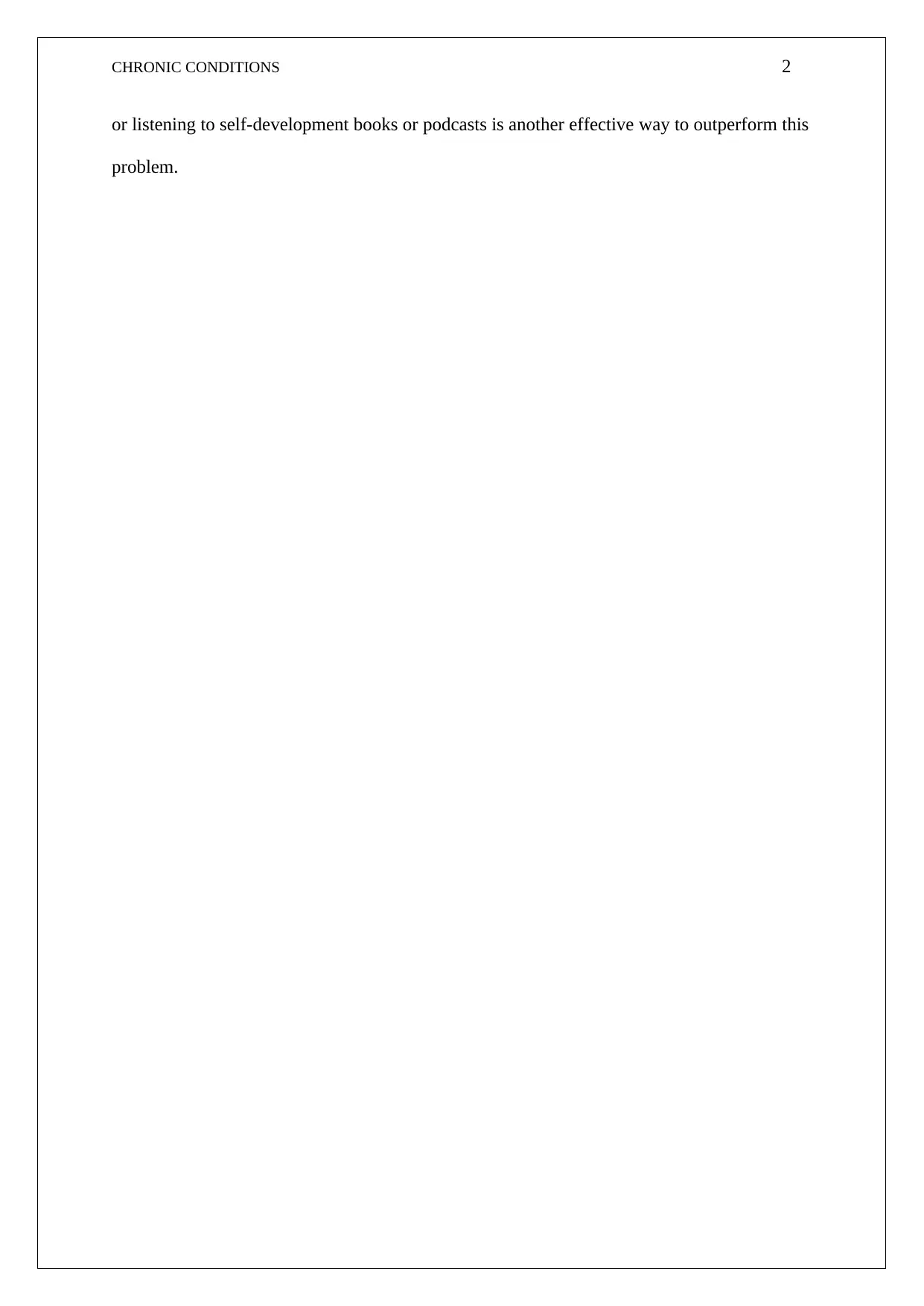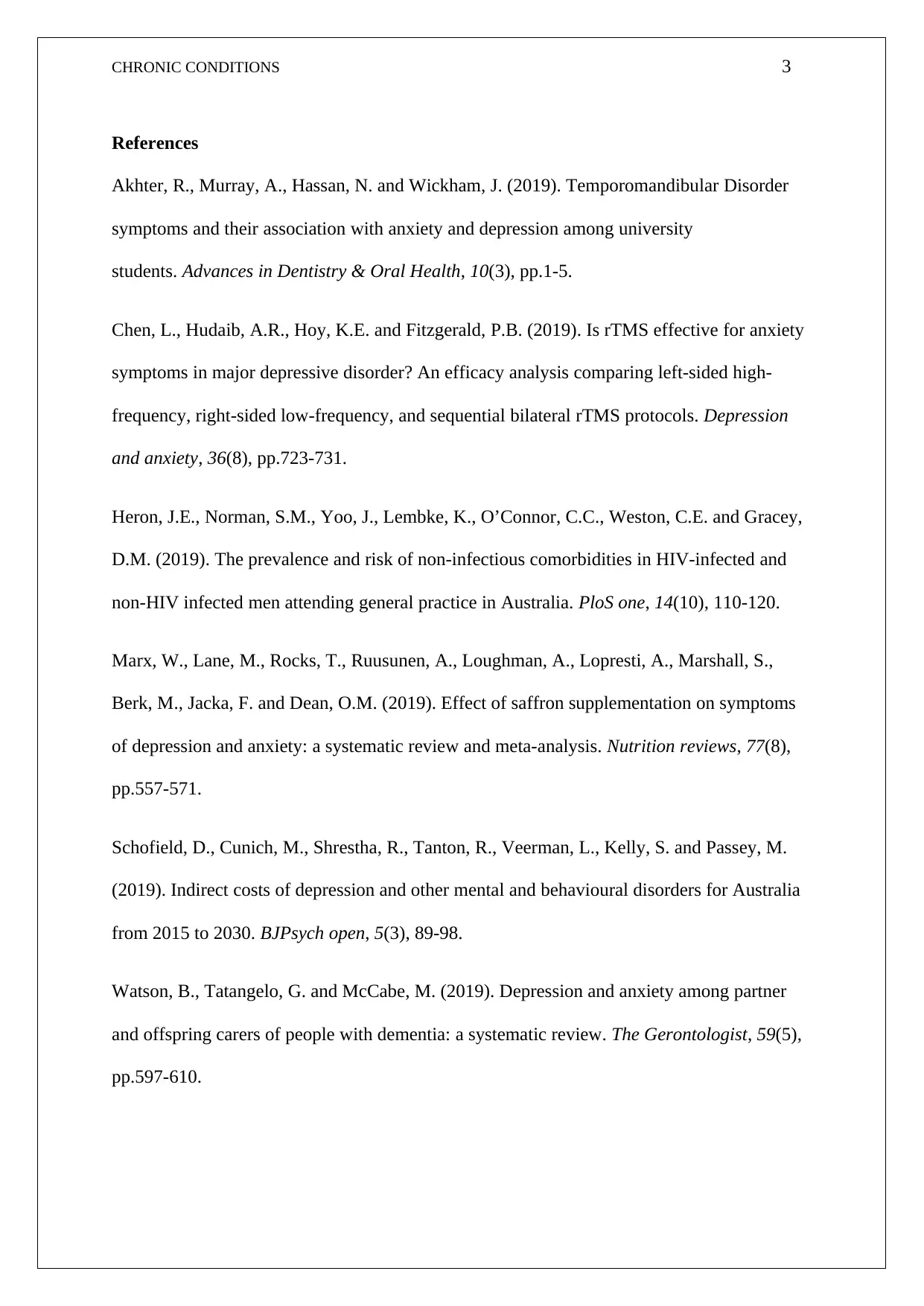CHRONIC CONDITIONS 2: Optimising Care Depression Blog, Australia
VerifiedAdded on 2022/09/08
|4
|774
|17
Homework Assignment
AI Summary
This assignment is a blog post focusing on the issue of depression among young Australians aged 19-27. The blog discusses the symptoms of depression and anxiety, emphasizing that prolonged symptoms can indicate a mental health disorder. It highlights the potential for suicidal thoughts if the condition is not addressed and differentiates between psychological and physiological aspects of the condition. The blog references research indicating a high prevalence of depression in this age group and the importance of seeking counseling and self-help strategies, such as focusing on positive aspects of life and engaging with self-development resources. References to relevant research papers are included to support the discussion. The assignment adheres to the requirements of a chronic conditions course, including accurate definitions, descriptions, and referencing.
1 out of 4








![[object Object]](/_next/static/media/star-bottom.7253800d.svg)